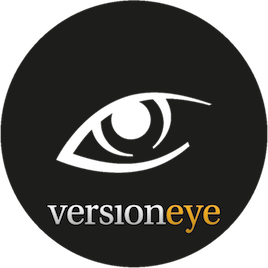Mock sample for your project: Available API endpoints
Integrate with "Available API endpoints" from versioneye.com in no time with Mockoon's ready to use mock sample

Available API endpoints
versioneye.com
Version: 2.0
Start working with "Available API endpoints" right away by using this ready-to-use mock sample. API mocking can greatly speed up your application development by removing all the tedious tasks or issues: API key provisioning, account creation, unplanned downtime, etc.
It also helps reduce your dependency on third-party APIs and improves your integration tests' quality and reliability by accounting for random failures, slow response time, etc.
Description
VersionEye is a cross-platform search engine for free/libre/open source software libraries.
Other APIs in the same category
Directorate of Economics and Statistics Cum Chief Registrar, Rajasthan, Rajasthan
apisetu.gov.in
Birth, Still-Birth, Death and Marriage Certificates issued by the Department, from 01 January 2014 onward, can be pulled into citizens' DigiLocker accounts.
AIIMS Rishikesh
apisetu.gov.in
Degree certificates issued by AIIMS Rishikesh in year 2018 can be pulled by students into their DigiLocker accounts

Transport for London Unified API
tfl.gov.uk
Our unified API brings together data across all modes of transport into a single RESTful API. This API provides access to the most highly requested realtime and status infomation across all the modes of transport, in a single and consistent way. Access to the developer documentation is available at https://api.tfl.gov.uk
Revenue, Registration & Land Reforms Department, Jharkhand
apisetu.gov.in
Department of Revenue, Registration & Land Reforms, Jharkhand (http://www.jharkhand.gov.in/revenue) is issuing Registration Certificate of Deeds into citizens' DigiLocker accounts from 5th May 2017 onwards.
Food and Supplies Department, Haryana
apisetu.gov.in
Ration Cards issued by Food & Supplies Department, Haryana (http://haryanafood.gov.in/) are available for download on DigiLocker.
ICICI Lombard GIC Ltd.
apisetu.gov.in
Insurance policies issued by ICICI Lombard (https://www.icicilombard.com) can be fetched by Citizens into their DigiLocker accounts.
Aviation Radiation API
amentum.space
Our atmosphere protects us from a hostile space radiation environment comprising high energy particles of solar and intergalactic origin. Solar radiation is significant during unpredictable and short lived solar flares and coronal mass ejections (CMEs); however, galactic cosmic radiation (GCR) is omnipresent. The GCR intensity varies with latitude, longitude, and time due to effects of solar activity on the interplanetary magnetic field, as well as the Earth's magnetic field. Space radiation collides with gases in the atmosphere, leading to a complex shower of high energy radiation, the intensity and composition of which varies spatially and temporally. Excessive exposure to radiation can damage DNA and lead to long-term health effects such as an increased risk of cancer. Resulting radiation levels at commercial aircraft altitudes are greater than at sea level due. Aircrew are classified as radiation workers in some countries; however, planning to limit their exposure, and monitoring, is generally lacking. Both real-time measurements and predictive models of radiation in the atmosphere are important to mitigate the radiation risk crew.
We host a RESTful API to models of cosmic ray induced ionising radiation in the atmosphere. The PARMA or CARI7 endpoints can be used to calculate Effective Dose or Ambient Dose Equivalent at a point.
The Route Dose API calculates the same quantities along a great circle route between two airports using CARI7.
API requests must contain a key "API-Key" in the header (see code samples). Obtain a key from here.
Help us improve the quality of our web APIs by completing our 2 minute survey here.
Amentum Pty Ltd is not responsible nor liable for any loss or damage of any sort incurred as a result of using the API.
Copyright Amentum Pty Ltd 2021.
We host a RESTful API to models of cosmic ray induced ionising radiation in the atmosphere. The PARMA or CARI7 endpoints can be used to calculate Effective Dose or Ambient Dose Equivalent at a point.
The Route Dose API calculates the same quantities along a great circle route between two airports using CARI7.
API requests must contain a key "API-Key" in the header (see code samples). Obtain a key from here.
Help us improve the quality of our web APIs by completing our 2 minute survey here.
Amentum Pty Ltd is not responsible nor liable for any loss or damage of any sort incurred as a result of using the API.
Copyright Amentum Pty Ltd 2021.
eDistrict Kerala, Kerala
apisetu.gov.in
eDistrict Kerala (https://edistrict.kerala.gov.in/) is the online service delivery portal for Kerala State Govt. Certain documents issued by it (e.g. Residence, Income, Caste Certificates etc) are made available in citizens' DigiLocker accounts.
Jharkhand State Board (Jharkhand Academic Council), Jharkhand
apisetu.gov.in
Jharkhand Academic Council (JAC) is issuing marksheets & passing certificates through DigiLocker. These can be pulled by students into their DigiLocker accounts. Currently available - 2009-2017 [Class XII], 2009-2017 [Class X].
Transport Department, Himachal Pradesh
apisetu.gov.in
Driving License (DL) and Vehicle Registration Certificate (RC) of the State, as available on Parivahan Sewa (http://parivahan.co.in/) of Ministry of Road Transport and Highways, are available on DigiLocker. Citizens can pull these documents into their DigiLocker accounts.
Dr. B.R. Ambedkar Institute of Technology,Andaman & Nicobar Islands
apisetu.gov.in
APIs provided by Dr. B.R. Ambedkar Institute of Technology,Andaman & Nicobar Islands.
Department of Empowerment of Persons with Disabilities
apisetu.gov.in
Department of Empowerment of Persons with Disabilities is issuing Unique Disability ID through DigiLocker. These can be pulled by beneficiaries into their DigiLocker accounts.